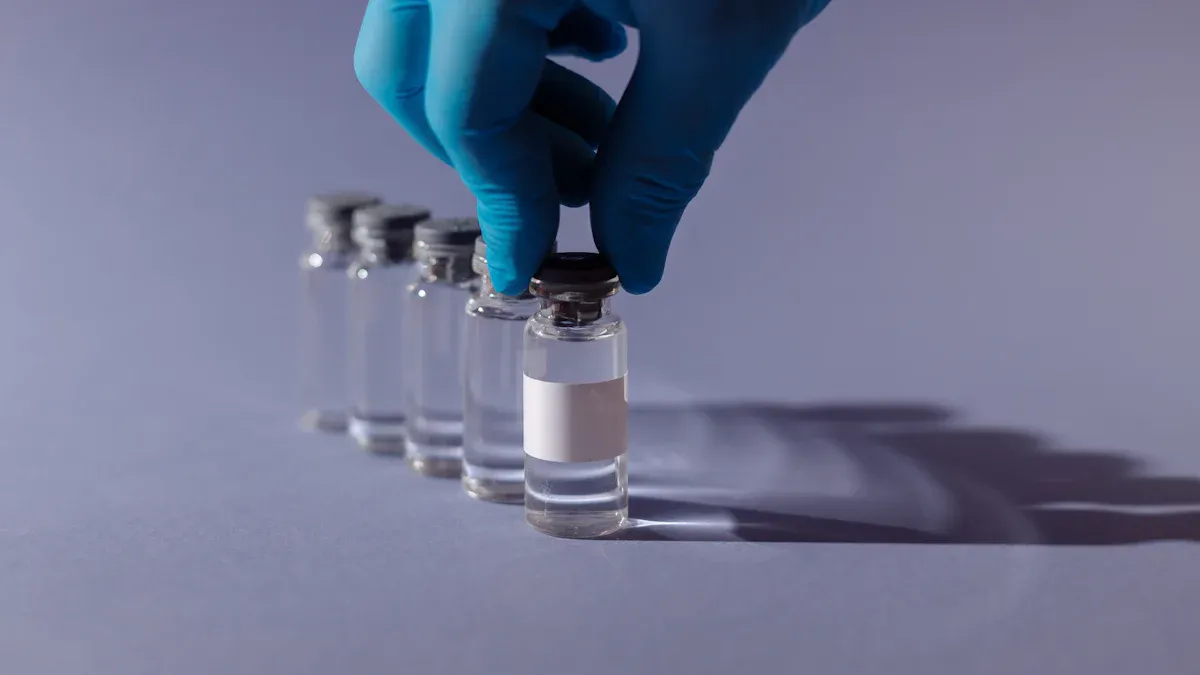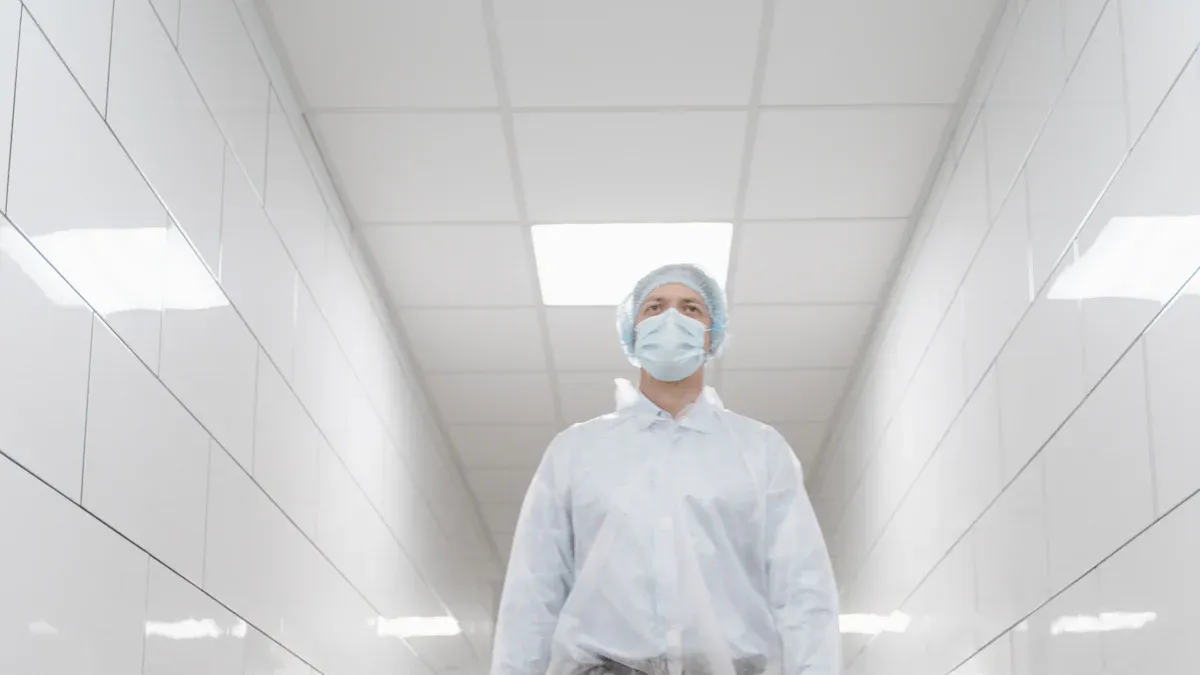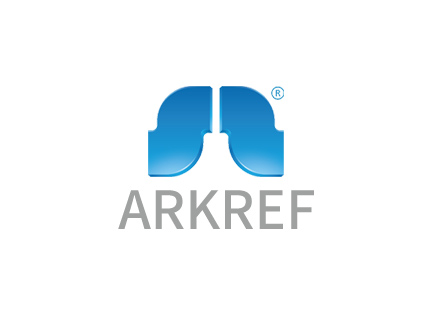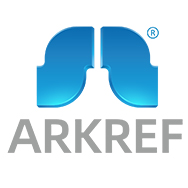Pharmaceutical Cold Storage Safety and Compliance Made Simple

You know that pharmaceutical cold storage safety is important every day. If you use the right steps, you can keep your pharmaceutical products safe and keep them working well. Unsafe storage can put your business in danger.
If products get too hot or too cold, vaccines, insulin, and other sensitive pharmaceutical items can go bad.
Packaging can break before you see any problems, especially when products are delivered or moved.
Products can go bad, you can get in trouble with rules, and patients can get hurt if mistakes happen.
Smart safety steps help you stay away from these expensive problems.
Key Takeaways
Make sure pharmaceutical products stay at the right temperature. Use real-time monitoring and alerts to stop spoilage and keep products safe.
Pick approved carriers and use digital checklists. Keep detailed records to follow rules and get ready for audits.
Train staff often on safety rules and how to handle products. This helps protect both products and workers in cold storage.
Pick cold storage equipment with automatic data logging, secure access, and backup power. These features help keep products safe and follow the rules.
Clean and take care of storage areas every day. Control pests and update procedures to keep your facility safe and ready for checks.
Essential Steps for Pharmaceutical Cold Storage

Quick Checklist
You need a simple checklist to keep your pharmaceutical cold storage safe and following the rules. Use this list every day to help you do things the right way:
Control and Monitor Temperature
Keep all pharmaceutical products at the right temperature, usually between 2-8°C. Use remote systems to watch temperature, humidity, door status, and power. Set up alerts to warn you if something changes.Schedule Docks and Prioritize Loads
Plan dock times to stop crowding and keep products out of unsafe areas. Pick docks based on what kind of product you have, like cold chain, sterile, or hazardous.Validate Carriers and Maintain Chain-of-Custody
Only use approved carriers for pharmaceutical shipments. Write down every time products are moved so you can track them from start to finish.Use Digital Checklists and SOPs
Use digital checklists for each load. Check temperature logs, tamper seals, clean vehicles, and labels. These steps help you get ready for audits.Backup Power and Cooling
Put in backup power and extra cooling like CO₂ or LN₂. These keep your products safe if the power goes out.Real-Time Visibility and Alerts
Use real-time monitoring and alerts. Act fast if there are any problems to protect the cold chain.Staff Training and Inventory Management
Teach your staff how to handle products the right way. Keep good inventory records to protect cold storage.
Tip:
Use sample ports and connect software for extra temperature probes. This helps you watch temperatures better and makes your facility stronger.
Why It Matters
When you follow these steps, you protect your pharmaceutical products and your business. Cold storage mistakes can ruin important samples and mess up research. These problems can hurt your reputation and cause big delays with rules or even stop clinical trials.
Watching the temperature all the time keeps things steady. This keeps your products safe and helps you follow the rules. Backup power keeps the right temperature during blackouts, so products do not spoil. Writing down temperature data gives proof for audits and checks.
Using digital checklists and real-time alerts lowers the chance of spoilage. For example, devices with temperature screens and triple insulation keep insulin and other sensitive medicines safe for hours. These steps stop waste and emergencies.
If you do not follow cold storage rules, you can have trouble with regulations and lose product quality. You must watch the cold chain closely, check conditions all the time, and write down every step. These actions help you follow the rules, keep samples good, and give safe pharmaceutical products to patients.
Note:
Following best practices in pharmaceutical cold storage helps you follow the rules, keeps your products safe, and builds trust with regulators and customers.
Cold Storage Safety Basics
Temperature Control
You need to keep the temperature steady in your cold storage. Most pharmaceutical products like vaccines need 2°C to 8°C. Some need freezing as cold as -30°C. The PHCbi Pharmaceutical Refrigerator Freezer Combo helps you keep these temperatures. This equipment keeps the temperature even and steady. It also meets the rules for storing sensitive products.
You should use systems that watch and record the temperature all the time. These systems warn you if the temperature is not safe. Put temperature probes in different spots to check for even temperatures. This helps you find any hot or cold spots in your storage. Good temperature control keeps products safe and helps you follow safety rules.
Tip:
Use automatic temperature monitoring with real-time alerts. This helps you fix problems fast if something goes wrong.
A table can help you remember the right temperatures:
Product Type | Recommended Temperature |
|---|---|
Vaccines | 2°C to 8°C |
Frozen Pharmaceuticals | Down to -30°C |
Worker Safety
You need to keep your team safe in cold storage. Cold air can make muscles stiff and hands tired. Workers may shiver, feel confused, or lose grip. These problems make injuries more likely.
To keep everyone safe, do these things:
Give workers warm gloves and the right clothes.
Plan warm-up breaks to stop cold stress.
Teach staff how to work safely in cold storage.
Make sure everyone talks clearly and writes down safety steps.
Teach every worker about safety rules and permits.
Approve all jobs before anyone starts working.
Make sure everyone wears personal protective equipment.
Write down all safety checks and emergency plans.
Note:
Good temperature control and strong safety steps protect your products and your team. Training and temperature checks keep your cold storage safe every day.
Compliance Requirements
Regulatory Standards
You have to follow strict rules to keep your pharmaceutical cold storage safe and legal. Every country and region has its own set of rules. The most important standards come from the FDA, USDA, GDP, WHO, and ISPE. These groups make the rules for storing, handling, and moving pharmaceutical products.
FDA (Food and Drug Administration): The FDA makes rules for pharmaceutical cold storage in the United States. You must keep products at the right temperature. You also need to follow rules for storage and transport. FDA 21 CFR Part 11 is about electronic records and signatures. This rule says your digital records must be safe and easy to check.
USDA (United States Department of Agriculture): The USDA checks products that come from animals or plants. You must follow their rules if you store vaccines, biologics, or other special items.
GDP (Good Distribution Practice): GDP rules help you keep the quality of pharmaceutical products during storage and transport. You must use good ways to control temperature, keep records, and train staff.
WHO (World Health Organization): WHO makes global rules for pharmaceutical cold storage. Their rules help you keep products safe in every country.
ISPE (International Society for Pharmaceutical Engineering): ISPE gives advice for building and running cold storage places. They help you design safe spaces and use the right equipment.
You should check these rules often. Rules can change, so you need to stay updated. If you do not follow these standards, you could lose product quality, get fined, or even have to close your business.
Tip:
Look at your rules every year. Update your training and equipment to match new requirements.
A table can help you see what each standard focuses on:
Standard | Focus Area | Applies To |
|---|---|---|
FDA | Temperature, records, safety | US pharmaceutical products |
USDA | Animal/plant products, vaccines | Biologics, special items |
GDP | Distribution, best practices | Global supply chain |
WHO | Global safety, quality | International products |
ISPE | Facility design, equipment | Storage and engineering |
Documentation
You need strong records to show you follow the rules in pharmaceutical cold storage. Good records prove you meet all requirements and best practices. You must keep your data safe, easy to find, and ready for audits.
Here is what you need for good documentation:
FDA-ready reports you can make quickly for inspections.
Continuous temperature tracking stored in the cloud to show you follow the rules.
Records that meet standards like FDA 21 CFR Part 11, EU GDP, and WHO PQS.
Centralized data from sensors and partners to help with audits and fast checks.
You should use digital systems to collect and store all temperature data. These systems help you find problems early and fix them before they get worse. Cloud storage keeps your records safe from loss or tampering. You can share these records with inspectors when they visit.
Note:
Always check that your records match the latest rules. Missing or wrong records are a common reason for failing compliance checks.
If you want to avoid mistakes, follow these best practices:
Teach your staff to record every temperature check and product move.
Use digital logs instead of paper to make fewer mistakes.
Set up alerts for missing or wrong temperature data.
Check your records every week to find mistakes early.
Keep backup copies of all your records.
You protect your business and your patients when you keep strong records. Good records show you follow all the rules for pharmaceutical cold storage.
Choosing Cold Storage Equipment

Equipment Types
You need the right equipment to keep your pharmaceutical products safe. There are many kinds of cold storage for different needs. Each type has special features for storing vaccines, medicines, or samples. The table below lists the most common equipment in laboratory cold storage:
Type of Cold Storage Equipment | Description / Features | Examples / Brands |
|---|---|---|
Refrigerators | Sizes from 1 to 72 cu. ft.; countertop, undercounter, upright, pass-thru; precise temperature control | Corepoint Scientific, Follett, Helmer |
Freezers | Sizes from 1 to 72 cu. ft.; plasma and ultra-low temperature (-30°C to -86°C) | Corepoint Scientific, PHCbi, Helmer |
Refrigerator & Freezer Combinations | Stacked designs to maximize space | Corepoint Scientific |
Specialty Refrigerators | Blood bank refrigerators, controlled room temperature cabinets | Corepoint Scientific, Follett |
Incubators | Humidity and temperature stability test chambers for stability testing and accelerated aging | Corepoint Scientific |
Ultra-Low Temperature Freezers | Long-term storage at -80°C with uniformity and frost minimization | Helmer Scientific, PHCbi |
Pass-thru Refrigerators | Boundary between clean rooms and regular environments; first-in-first-out inventory control | Helmer Scientific |
Pick laboratory cold storage equipment that matches your products. Ultra-low temperature freezers are best for vaccines and sensitive samples. Pass-thru refrigerators help keep clean areas separate from other spaces.
Key Features
When you pick cold storage, look for features that protect your products. These features also help you follow the rules. Look for these important things:
Automatic data logging and remote alarms warn you fast.
Forced air circulation cools evenly and works better.
Secure access controls, like keyed locks and locking bins.
Explosion-proof options for dangerous chemicals.
Advanced monitoring lets you see and track storage in real time. You can find risks early and keep products safe during storage and shipping. These features help you follow global rules and keep your cold storage working well.
Tip:
Pick cold storage with validated packaging and continuous monitoring. This keeps product quality high and supports safe, temperature-controlled storage for every shipment.
Always choose equipment that fits your needs and meets all safety and compliance rules. The right cold storage keeps your products safe and your business ready for audits.
Construction and Materials
Approved Materials
You have to pick the right materials for your pharmaceutical cold storage. The materials you use will affect safety and temperature for many years. Using approved materials helps you protect your products and follow the rules.
PIR core insulation panels keep heat out and cold in. These panels help keep the temperature steady inside. They also do not catch fire easily, which makes storage safer.
Metal skins like galvanized steel or stainless steel stop rust. These surfaces are easy to clean and help keep germs away.
Joints such as tongue-and-groove or cam-lock make tight seals. These seals keep out water and stop heat from getting in.
These choices help you follow Good Distribution Practices and Good Manufacturing Practices. You keep products safe, spend less on repairs, and your cold storage lasts longer.
Tip:
Always make sure your building materials meet all local and global rules before you build or fix your facility.
Hygiene and Pest Control
You must keep your cold storage clean and free from pests. Clean storage stops bacteria, mold, and other germs from getting in. Pests like mice or bugs can break packages and ruin your stock.
Do these things to keep your storage safe:
Clean all surfaces and tools every day with approved cleaners.
Seal cracks and holes so pests cannot get inside.
Use pest traps and check them often.
Teach workers to look for signs of pests or germs.
Keep a log of cleaning and checks for every area.
A clean storage area helps you pass checks and keeps products safe for patients. Good cleaning and pest control also help you avoid recalls or fines.
Note:
Cleaning and pest control are just as important as temperature control in pharmaceutical cold storage.
Daily Practices for Safety and Compliance
Monitoring and Maintenance
You need to watch your cold storage every day. This keeps your products safe and helps you follow the rules. Use temperature monitoring systems with sensors that are checked and set right. These sensors watch temperature and humidity all the time. Remote systems let you see the storage conditions from anywhere. Set alarms to warn you if something changes. Fast action stops product loss and keeps you following the rules.
Take care of your equipment often. Check seals, tracks, and hardware every week. Clean off any dirt or ice from sensors and moving parts. Add oil to equipment as the maker says. Have a trained technician check everything once a year. These steps help your cold storage last longer and work better. Good maintenance staff help you follow the rules and stop big problems.
Tip:
Taking care of your equipment early stops ice and gasket problems. It also helps your facility meet FDA, EU, and GXP rules.
Record-Keeping
Keeping good records is very important for safety and following the rules. The people who make the rules want you to keep records of temperature, maintenance, and inventory. Use safe data logging systems that cannot be changed. These systems make audit trails and keep your data safe. Store your temperature data in the cloud so you can get it easily and keep it safe. Alarms and logs help you fix problems fast.
You need to make reports that are ready for audits. Keep logs of maintenance and check your storage often. Use audit trails that cannot be changed for access and inventory moves. Put data from different trackers and partners in one place. This makes quality checks easier and helps you follow the rules.
Note:
Keeping good records and watching your storage helps you pass audits and keeps pharmaceutical products safe for patients.
Warehouse and Logistics
Warehouse Management Systems
You need a strong warehouse management system for cold chain logistics. These systems help you track samples from when they arrive until they leave. You can always see where each sample is. This helps you avoid mistakes and keeps your sample protection strong.
A good system lets you:
Track all samples as they move.
Set alerts if the temperature changes.
Record every move for storage and shipping.
Connect with cold chain logistics partners.
You should use a system that works with barcode scanning. This makes checking samples in and out easy. RFID tags can help you track things even faster. These tools help keep your cold chain logistics safe and efficient.
Tip:
Pick a warehouse management system that works with your cold chain logistics software. This helps you keep all your data together.
Packaging and Pallets
Good packaging and pallets are important for cold chain logistics. You must use packaging that keeps samples at the right temperature. Insulated boxes and gel packs help protect samples during transport. Pick pallets that fit your racks and let air move around.
Here is a quick guide for packaging in cold chain logistics:
Packaging Type | Use Case | Benefit for Sample Protection |
|---|---|---|
Insulated Shippers | Clinical samples | Keeps temperature steady |
Gel Packs | Short trips | Prevents overheating |
Dry Ice | Frozen samples | Maintains low temperatures |
Check packaging before every shipment. Damaged boxes can put samples at risk. Always use clean pallets to stop contamination. Good packaging and pallets help you meet cold chain logistics standards and keep your samples safe.
Note:
Never reuse packaging for clinical samples. This keeps your sample protection strong and supports safe cold chain logistics.
Training and Continuous Improvement
Staff Training
You need to train your staff to follow all the rules in pharmaceutical cold storage. Every team member should know why following the rules is important. Teach them how to handle samples, use monitoring tools, and follow safety steps. Training helps your staff find problems early and fix them fast.
Start with a simple training plan. Talk about rules, temperature checks, and what to do in emergencies. Let staff practice real tasks with hands-on lessons. Update your training when rules change. Use checklists to see how everyone is doing and make sure they know their jobs.
Tip:
Give short review classes every few months. This helps your team remember the rules and best ways to work.
Ongoing Evaluation
You need to check your cold storage often. Regular checks help you find problems with following the rules. Use audits and self-checks to look at records, staff actions, and storage conditions. Check how you handle samples and see if you meet the latest rules.
Make a simple table to track your checks:
Area | Frequency | Responsible Person |
|---|---|---|
Temperature Monitoring | Daily | Supervisor |
Regulatory Training | Quarterly | Manager |
Samples Handling | Weekly | Staff Lead |
Look at your monitoring systems to see if they work well. Change your steps if you find problems or if rules change. Ask your team to share ideas to make things better. This helps you keep up with rules and protect your samples.
Note:
Always working to get better keeps your facility safe, helps you follow the rules, and protects your samples.
You keep pharmaceutical products safe by following the rules. You need to watch storage and teach your staff what to do. Following the rules helps your facility stay safe and ready for checks. You should look at the rules often and make sure your equipment is up to date. Keep good records so you can show you follow the rules. Checking for problems early helps you fix them fast. Use approved materials and handle products safely to keep them good. Audits check if you are following the rules and storing things the right way. Look at your cold storage often to make sure it is safe. Change your steps when new rules come out so you always follow them.
Always check your rules and update your steps. Make sure your procedures are ready for new changes.
FAQ
What temperature range should you keep most pharmaceutical products in?
Most pharmaceutical products need to stay between 2°C and 8°C. Some products need colder storage, like -20°C or -80°C. Always read the product label to know the right temperature.
Tip:
Use a digital thermometer to check the temperature every day.
How often should you check and record cold storage temperatures?
Check and write down the temperature at least two times a day. Automated systems can record the temperature every minute. This helps you find problems early and keeps your records ready for audits.
Method | Frequency |
|---|---|
Manual Check | Twice a day |
Automated Log | Every minute |
What happens if your cold storage loses power?
If the power goes out, backup generators or cooling must turn on fast. You need to act quickly to keep your products safe. Always have an emergency plan and test your backup systems often.
Check backup power every month.
Train your staff for emergencies.
Why is documentation so important for compliance?
Good documentation shows you follow all the rules. It helps you pass audits and keeps your business safe. If records are missing or wrong, you could get fined or lose products.
Note:
Always keep digital backups of your records for extra safety.
See Also
Key Guidelines For Maintaining Safety In Cold Rooms
Understanding Cold Storage Functionality And Its Importance
Seven Leading Advances Transforming Cold Storage Logistics
Leading Cold Room Producers Serving The Logistics Industry
Solving Storage Challenges With Versatile Cold Storage Solutions

